
Installation Instructions
ControlNet Fiber-optic Ring Repeater
Modules
Catalog Numbers 1786-RPFRL/B, 1786-RPFRXL/B
About the Module
The ControlNet Fiber-optic Ring Repeater module supports fiber media
redundancy by using a ring topology. The fiber-optic technology permits long
(1786-RPFRL/B module) or very long (1786-RPFRXL/B module)
transmission ranges. Both modules provide optimum protection against EMI
effects along the transmission link and at the repeaters themselves. The fiber link
provides ground isolation between nodes and is less susceptible to noisy
environments than traditional copper media.
Topic Page
Important User Information 2
Environment and Enclosure 3
North American Hazardous Location Approval 4
Fiber-optic Safety Statements 5
About Fiber Topology 8
Mount the Fiber Modules 11
Choose Fiber-optic Cable for the Module 19
Connect the Cable Between the Repeater Modules 24
Interpret the Status Indicators 28
Specifications 33
Additional Resources 37

2 ControlNet Fiber-optic Ring Repeater Modules
Rockwell Automation Publication 1786-IN003D-EN-P - April 2011
Important User Information
Solid-state equipment has operational characteristics differing from those of electromechanical
equipment. Safety Guidelines for the Application, Installation and Maintenance of Solid State Controls
(Publication SGI-1.1
available from your local Rockwell Automation sales office or online at
http://www.rockwellautomation.com/literature/
) describes some important differences between
solid-state equipment and hard-wired electromechanical devices. Because of this difference, and also
because of the wide variety of uses for solid-state equipment, all persons responsible for applying this
equipment must satisfy themselves that each intended application of this equipment is acceptable.
In no event will Rockwell Automation, Inc. be responsible or liable for indirect or consequential damages
resulting from the use or application of this equipment.
The examples and diagrams in this manual are included solely for illustrative purposes. Because of the
many variables and requirements associated with any particular installation, Rockwell Automation, Inc.
cannot assume responsibility or liability for actual use based on the examples and diagrams.
No patent liability is assumed by Rockwell Automation, Inc. with respect to use of information, circuits,
equipment, or software described in this manual.
Reproduction of the contents of this manual, in whole or in part, without written permission of Rockwell
Automation, Inc., is prohibited.
Throughout this manual, when necessary, we use notes to make you aware of safety considerations.
WARNING: Identifies information about practices or circumstances that can cause an
explosion in a hazardous environment, which may lead to personal injury or death,
property damage, or economic loss.
ATTENTION: Identifies information about practices or circumstances that can lead to
personal injury or death, property damage, or economic loss. Attentions help you identify
a hazard, avoid a hazard and recognize the consequences.
SHOCK HAZARD: Labels may be on or inside the equipment, for example, drive or motor,
to alert people that dangerous voltage may be present.
BURN HAZARD: Labels may be on or inside the equipment, for example, drive or motor,
to alert people that surfaces may reach dangerous temperatures.
IMPORTANT Identifies information that is critical for successful application and understanding of the
product.

ControlNet Fiber-optic Ring Repeater Modules 3
Rockwell Automation Publication 1786-IN003D-EN-P - April 2011
Environment and Enclosure
ATTENTION: This equipment is intended for use in a Pollution
Degree 2 industrial environment, in overvoltage Category II
applications (as defined in IEC 60664-1), at altitudes up to 2000 m
(6562 ft) without derating.
This equipment is considered Group 1, Class A industrial equipment
according to IEC/CISPR 11. Without appropriate precautions, there
may be difficulties with electromagnetic compatibility in residential
and other environments due to conducted and radiated disturbances.
This equipment is supplied as open-type equipment. It must be
mounted within an enclosure that is suitably designed for those
specific environmental conditions that will be present and
appropriately designed to prevent personal injury resulting from
accessibility to live parts. The enclosure must have suitable
flame-retardant properties to prevent or minimize the spread of flame,
complying with a flame spread rating of 5VA, V2, V1, V0 (or
equivalent) if non-metallic. The interior of the enclosure must be
accessible only by the use of a tool. Subsequent sections of this
publication may contain additional information regarding specific
enclosure type ratings that are required to comply with certain
product safety certifications.
In addition to this publication, see the following:
• Industrial Automation Wiring and Grounding Guidelines,
publication 1770-4.1
, for additional installation requirements
• NEMA Standard 250 and IEC 60529, as applicable, for explanations
of the degrees of protection provided by enclosures.

4 ControlNet Fiber-optic Ring Repeater Modules
Rockwell Automation Publication 1786-IN003D-EN-P - April 2011
North American Hazardous Location Approval
The following information applies
when operating this equipment in
hazardous locations.
Informations sur l’utilisation de cet
équipement en environnements
dangereux.
Products marked "CL I, DIV 2, GP A, B, C, D" are
suitable for use in Class I Division 2 Groups A, B, C,
D, Hazardous Locations and nonhazardous
locations only. Each product is supplied with
markings on the rating nameplate indicating the
hazardous location temperature code. When
combining products within a system, the most
adverse temperature code (lowest "T" number) may
be used to help determine the overall temperature
code of the system. Combinations of equipment in
your system are subject to investigation by the
local Authority Having Jurisdiction at the time of
installation.
Les produits marqués "CL I, DIV 2, GP A, B, C, D" ne
conviennent qu'à une utilisation en environnements
de Classe I Division 2 Groupes A, B, C, D dangereux et
non dangereux. Chaque produit est livré avec des
marquages sur sa plaque d'identification qui indiquent
le code de température pour les environnements
dangereux. Lorsque plusieurs produits sont combinés
dans un système, le code de température le plus
défavorable (code de température le plus faible) peut
être utilisé pour déterminer le code de température
global du système. Les combinaisons d'équipements
dans le système sont sujettes à inspection par les
autorités locales qualifiées au moment de
l'installation.
WARNING:
Explosion Hazard -
•Do not disconnect equipment
unless power has been removed
or the area is known to be
nonhazardous.
•Do not disconnect connections to
this equipment unless power has
been removed or the area is
known to be nonhazardous.
Secure any external connections
that mate to this equipment by
using screws, sliding latches,
threaded connectors, or other
means provided with this product.
•Substitution of components may
impair suitability for Class I,
Division 2.
•If this product contains batteries,
they must only be changed in an
area known to be nonhazardous.
AVERTISSEMENT:
Risque d’Explosion –
•Couper le courant ou s'assurer que
l'environnement est classé non
dangereux avant de débrancher
l'équipement.
•Couper le courant ou s'assurer que
l'environnement est classé non
dangereux avant de débrancher les
connecteurs. Fixer tous les
connecteurs externes reliés à cet
équipement à l'aide de vis, loquets
coulissants, connecteurs filetés ou
autres moyens fournis avec ce
produit.
•La substitution de composants peut
rendre cet équipement inadapté à
une utilisation en environnement de
Classe I, Division 2.
•S'assurer que l'environnement est
classé non dangereux avant de
changer les piles.

ControlNet Fiber-optic Ring Repeater Modules 5
Rockwell Automation Publication 1786-IN003D-EN-P - April 2011
Prevent Electrostatic Discharge
Fiber-optic Safety Statements
ATTENTION: This equipment is sensitive to electrostatic
discharge, which can cause internal damage and affect normal
operation. Follow these guidelines when you handle this
equipment:
• Touch a grounded object to discharge potential static.
• Wear an approved grounding wriststrap.
• Do not touch connectors or pins on component boards.
• Do not touch circuit components inside the equipment.
• Use a static-safe workstation, if available.
• Store the equipment in appropriate static-safe packaging when
not in use.
ATTENTION: Laser light can damage your eyes. Laser light is
invisible. Looking at it directly does not cause pain. The iris of the
eye will not close involuntarily as when you view a bright light.
Consequently, serious damage to the retina of the eye is possible.
Never look into the end of a fiber when it may have a laser coupled to
it, or directly into fiber ports. Should accidental eye exposure to laser
light be suspected, get an eye examination immediately.
ATTENTION: Class 1 laser product. Laser radiation is present
when the system is open and interlocks bypassed. Only trained and
qualified personnel should be allowed to install, replace, or service
this equipment.

6 ControlNet Fiber-optic Ring Repeater Modules
Rockwell Automation Publication 1786-IN003D-EN-P - April 2011
WARNING: Hazardous areas require the use of specially designed
products. Only when the product is marked accordingly (see the
product ID label) it may be used in Class I Division 2 hazardous
environments. Rockwell Automation provides similar products that
are intrinsically safe and are suitable for more hazardous
environments. Use the appropriate products that are designed for
the specific hazardous environments that your installation requires.
In intrinsically-safe applications, consult with your local safety
coordinator because you need specific products on both ends of the
fiber link. Refer to the ControlNet EX Media Planning and
Installation Manual, publication CNET-IN003
.
TIP
You must use an adapter module (1786-RPA/B) with the
1786-RPFRL/B or 1786-RPFRXL/B modules to provide power to all
repeaters, and control the flow of data from one repeater to
the next.
IMPORTANT
The distance between repeaters that can be supported is
dependent on the quality of the fiber, number of splices, and
connectors. The total loss of the fiber link must be less than
15 dB for the 1786-RPFRL/B module and 10.5 dB for the
1786-RPFRXL/B module.
The total size of the ring or length of the copper and fiber
ControlNet network is limited by the ControlNet protocol to
20 km or less. Refer to Determine Maximum Network Length
on page
21 for more information.
To determine the maximum distance between any two fiber
modules, refer to the table on page
19.

ControlNet Fiber-optic Ring Repeater Modules 7
Rockwell Automation Publication 1786-IN003D-EN-P - April 2011
The 1786-RPFRL/B and 1786-RPFRXL/M modules provide the following:
• Two fiber channels
• Activity status indicators for each fiber channel
• Relay contact connector for communication and system status
Figure 1- Module Components
Relay Contact Connector (not shown)
42546
Right-side
Backplane
Connector
with
Protective
Cover
Both sides of the module contain a backplane connector.
Channel 2 Fiber Port
Module Locking Tab
Channel 1 Fiber Port
Protective
Caps
Indicators

8 ControlNet Fiber-optic Ring Repeater Modules
Rockwell Automation Publication 1786-IN003D-EN-P - April 2011
About Fiber Topology
The 1786-RPFRL/B or 1786-RPFRXL/B long or extra-long modules can be
used to create a redundant optical link between segments. When used in a ring
topology, a single media failure between any two repeater modules in a ring will
not impact the communication link.
The repeaters detect the failure of an optical link. When a failure occurs, the
affected channel port status indicator will be one of the following:
• Red, indicating a faulty link
• Flashing green/off, indicating no network activity is present
Refer to Interpret the Status Indicators on page
28 for more information.
In addition, a relay contact connector on the 1786-RPFRL/B and
1786-RPFRXL/B modules indicates a remote faulty link. See page
32 for more
information on the relay contact connector.
We recommend that you install the duplex optical cables of the two optical
channels along different routes. For more information on cabling, refer to
the ControlNet Fiber Media Planning and Installation Guide,
publication CNET-IN001
.
The fiber repeater consists of the following:
• A 1786-RPA/B repeater adapter
• Up to two 1786-RPFRL/B or 1786-RPFRXL/B long or extra-long fiber
repeater modules
• Up to four 1786-RPCD copper fiber repeater modules
• Up to four 1786-RPFS or 1786-RPFM short- or medium-distance fiber
repeater modules

ControlNet Fiber-optic Ring Repeater Modules 9
Rockwell Automation Publication 1786-IN003D-EN-P - April 2011
The maximum number of repeater modules (in any combination) you can use in
a configuration is dependent on the current draw of each repeater module. Total
current draw supplied by the 1786-RPA/B repeater adapter cannot exceed
1.6 A @ 5V DC.
In addition to using the fiber repeater in a ring topology, you can do the
following:
• Extend the total length of your segment
• Create a point-to-point or star configuration (multiple directions from
one point)
• Provide electrical isolation and immunity to interference
• Use in hazardous areas
The number of fiber repeaters and cable length total limit depends on your
network topology.
Example Topology Application
See page 10 for an example topology.
For more information on topology application rules in relation to fiber rings,
refer to the ControlNet Fiber Media Planning and Installation Guide,
publication CNET-IN001
.
IMPORTANT
You cannot have media redundancy if you have a closed loop ring
installation anywhere in the network. You may use the
1786-RPFRL/B, 1786-RPFRXL/B, 1786-RPFM, or 1786-RPFS
modules in a linear fiber topology.
Do not mix fiber repeater modules to achieve a ring topology and
1786-RPFM modules to achieve a redundant media topology in
one configuration.
For additional topology configurations, refer to Allowable
Configurations When Using Repeaters in a Ring Topology on
ControlNet, Knowledgebase Technical Note ID 32215
.

10 ControlNet Fiber-optic Ring Repeater Modules
Rockwell Automation Publication 1786-IN003D-EN-P - April 2011
Fiber-optic Ring Topology
Use this configuration for long distances. A fiber-optic ring may contain as many
as 20 member modules. These member modules (four shown in Figure 2
)
include the following:
• 1786-RPA/B repeater adapter module
• 1786-RPFRL/B long-distance ring repeater module
• 1786-RPFRXL/B extra long-distance ring repeater module
Figure 2 - Fiber Ring Topology Example
TIP
You cannot exceed 20 repeater modules in a series. If a ring is
broken, whether accidentally or on purpose for testing, the
configuration then becomes linear and the number of repeaters
depends on where the ring is broken. Most likely you will have as
many repeaters as in the original ring, such as the four shown in
Figure 2.
1786-RPA
1786-RPFR(X)L
1786-RPFR(X)L
1786-RPA
CH1 CH2
CH1 CH2
1786-RPA
1786-RPFR(X)L
1786-RPA
1786-RPFR(X)L
CH1 CH2
CH1 CH2
Rx
Tx
Rx
Tx
Rx
Tx
Rx
Tx
Rx
Tx
Rx
Tx
Rx
Tx
Rx
Tx
1794-ACNR15
1794-ACNR15
1794-ACNR15
31237-M
On all fiber repeater modules, the leftmost connector is the RX (Receive) port;
the rightmost connector is the TX (Transmit) port.

ControlNet Fiber-optic Ring Repeater Modules 11
Rockwell Automation Publication 1786-IN003D-EN-P - April 2011
Mount the Fiber Modules
This section explains how to mount the module.
ATTENTION: Be certain that the adapter and repeater modules
are secured together with DIN rail anchors. Failure to do so may
result in the loss of communication and/or cause damage to the
modules.
The total number of modules that can be attached to the 1786-RPA/B
repeater adapter cannot exceed four or the total power consumption
of the modules cannot exceed 1.6 A @ 5V DC, whichever comes first.
The 1786-RPFRL/B and 1786-RPFRXL/B modules require 570 mA each,
therefore you can attach only two of these modules to a
1786-RPA/B repeater module.
If you exceed the module or power limit, you may cause damage to the
modules and repeater adapter.
TIP
Horizontal mounting is preferred. Vertical mounting is allowed.
We recommend that the 1786-RPA/B module be mounted at the
top if vertical mounting is chosen.
ATTENTION: This product is grounded through the DIN rail to
chassis ground. Use zinc plated yellow-chromate steel DIN rail to
assure proper grounding. The use of other DIN rail materials (for
example, aluminum or plastic) that can corrode, oxidize, or are poor
conductors, can result in improper or intermittent grounding.
Secure DIN rail to mounting surface approximately every 200 mm
(7.8 in.) and use end-anchors appropriately.

12 ControlNet Fiber-optic Ring Repeater Modules
Rockwell Automation Publication 1786-IN003D-EN-P - April 2011
Figure 3 - Mounting Dimensions
Horizontal mounting requirements are determined by using the following
formula:
RPA/B width + (4.2 inches x number of RPFR(X)L + 2 inches
For more information, see the ControlNet Modular Repeater Adapter
Installation Instructions, publication 1786-IN013
.
Do these steps to mount a module.
1. Position the module on a 35 x 7.5 mm (1.38 x 0.30 in.) DIN rail,
Allen- Bradley part number 199- DR1; 46277- 3; EN 50022).
IMPORTANT
Maintain adequate separation from other equipment to
guarantee that ambient temperature is within the operating
range of this module. You must follow applicable separation
codes for safe operation.
Dimensions are in mm (in.).
31532-M
107
(4.20)
69
(2.76)
100
(4.0)
90
(3.6)
108
(4.25)

ControlNet Fiber-optic Ring Repeater Modules 13
Rockwell Automation Publication 1786-IN003D-EN-P - April 2011
2. Hook the lip on the rear of the module onto the top of the DIN rail, and
rotate the module onto the rail.
3. Press the module onto the DIN rail until flush.
The locking tab should snap into position and lock the module to the
DIN rail.
4. If the module does not snap into position, use a screwdriver or similar
device to retract the locking tab while pressing the module flush onto the
DIN rail.
5. Release the locking tab to lock the module in place.
If necessary, push the locking tab to lock.
42542
42543

14 ControlNet Fiber-optic Ring Repeater Modules
Rockwell Automation Publication 1786-IN003D-EN-P - April 2011
6. Remove the protective backplane cap as shown on page 18.
7. Once the modules are attached to the DIN rail, slide them together to
mate the repeater adapter with the repeater module.
WARNING: Removal and insertion under power (RIUP) is not
supported. These modules must be powered down while
connecting and disconnecting them from any interconnected
modules.
If you insert or remove the module while backplane power is on, an
electrical arc can occur. This could cause an explosion in hazardous
location installations.
Be sure that power is removed or the area is nonhazardous before
proceeding.
WARNING: When you connect or disconnect the removable
terminal block (RTB) with field side power applied, an electrical arc
can occur. This could cause an explosion in hazardous location
installations.
Be sure that power is removed or the area is nonhazardous before
proceeding.
42632

ControlNet Fiber-optic Ring Repeater Modules 15
Rockwell Automation Publication 1786-IN003D-EN-P - April 2011
Install the Ferrites
This procedure explains how to set up a ferrite to reduce EMI interference. The
ferrite will be connected to the module’s relay contact connector.
1. Obtain 0.25... 2.5 mm
2
(22...14 AWG) wire in a length sufficient for
your application.
2. Twist the wires.
TIP
If you are not planning to use the relay contact connector on the
module for system status, you do not need to install the ferrites.
TIP
You may want to choose a smaller wire gauge (for example,
0.25…0.823 mm
2
(22…18 AWG) with sufficient size and rating
to handle amperage requirements of the power supply to aid in
installation of the ferrite.
Use the key to open the ferrite. Remove the key and close the ferrite.
31530
Loop the Wire
Around the Ferrite
Twist the Wires

16 ControlNet Fiber-optic Ring Repeater Modules
Rockwell Automation Publication 1786-IN003D-EN-P - April 2011
Install the Ferrite at the Power Supply
Do these steps to attach the ferrite to the power supply of the
1786-RPA/B module.
1. Use the key supplied with the ferrite to open it.
Be careful not to damage the wires.
2. Form a loop with both wires (+ and -) approximately 100 mm (4 in.)
away from the power supply connector of the 1786-RPA/B module.
3. Loop the wires through the ferrite.
4. Close the ferrite.
Be careful not to damage the wires.
5. Strip approximately 6 mm (0.24 in.) of wire from the end that will
connect to the power supply connector on the 1786-RPA/B module.
6. Remove the power supply connector from the 1786-RPA/B module.
7. Install the stripped ends of the wires in the power supply connector on
the 1786-RPA/B module as shown below.
IMPORTANT
Do not use more than one ferrite per 1786-RPA/B module.
Connect Power Supply Wires
31528

ControlNet Fiber-optic Ring Repeater Modules 17
Rockwell Automation Publication 1786-IN003D-EN-P - April 2011
8. Reinsert the power supply connector into the 1786-RPA/B module.
Install the Ferrite at the Relay Contact Connector
1. Use the key to open the remaining ferrite.
2. Form a loop with both wires (+ and -) approximately 100 mm (4.0 in.)
away from the relay contact connector of the 1786-RPFRL/B or
1786-RPFRXL/B module.
3. Loop the wires through the ferrite.
4. Close the ferrite.
Be careful not to damage the wires.
5. Strip approximately 6 mm (0.24 in.) of wire from the end that will
connect to the relay contact connector on the 1786-RPFRL/B or
1786-RPFRXL/B module.
6. Remove the relay contact connector from the 1786-RPFRL/B or
1786-RPFRXL/B module.
7. Install the stripped ends of the wires in the relay contact connector on
the fiber repeater module as shown below.
8. Reinsert the relay contact connector into the 1786-RPFRL/B or
1786-RPFRXL/B module.
Connect the Ferrite Here

18 ControlNet Fiber-optic Ring Repeater Modules
Rockwell Automation Publication 1786-IN003D-EN-P - April 2011
9. Connect the fiber cable as described on page 26.
10. If you plan not to use a channel, attach a small section of fiber cable (or a
Simplex fiber loop) between the Receive port (RX) and the Transmit
Port (TX) of any unused fiber port to create a jumper.
Although not required for module operation, the jumper turns the
status indicators green and prevents the relay contact connector from
opening and indicating a failure.
Remove the Protective Caps
1. Remove the protective caps from the fiber ports that you are going to
use.
2. Save the caps for future use.
The left side of the module (not shown here) also contains a
backplane connector.
If you plan Then
To place the module in storage Keep the protective caps on the channels to
protect the unit from dust.
To connect another module to the right
backplane connector
Remove the protective backplane cap and
save the cap for future use.
Not to connect to the right backplane
connector
Leave the backplane cap on.
Protective
Backplane Cap
Protective Cap

ControlNet Fiber-optic Ring Repeater Modules 19
Rockwell Automation Publication 1786-IN003D-EN-P - April 2011
Choose Fiber-optic Cable for the Module
The type of fiber cable you choose to use depends on the network environment.
Consult your installation professional to determine the best type of cable to use
for your environmental conditions. Refer to the ControlNet Fiber Media
Planning and Installation Guide, publication CNET-IN001
, for details.
Understand the Maximum Optical Power Budget
This table shows the maximum optical power budget available for different cable
types. Note that the 1786-RPFRL/B module cannot be used with
single-mode fiber.
See page
20 for formulas to determine your optical power budget.
ATTENTION: Do not discard the end cap. Use this end cap to
cover the exposed interconnections on the last repeater module on
the DIN rail. Failure to do so could result in equipment damage or
injury from electric shock.
Module Cable Type Optical Power Budget Termination Type
1786-RPFRL/B 62.5/125 µm,
multimode, 1300 nm,
graded index
15 dB ST connectors,
plastic or ceramic;
no metal
connectors
1786-RPFRXL/B 62.5/125µ
m,
multimode, 1300 nm,
graded index
10.5 dB
9/125 µ
m,
single mode, 1300 nm,
graded index

20 ControlNet Fiber-optic Ring Repeater Modules
Rockwell Automation Publication 1786-IN003D-EN-P - April 2011
The sample formulas in the example illustrate how you can determine the total
loss for fiber-optic cables in your system configuration. The values we use in the
formulas are typical: yours may vary, depending on your application.
EXAMPLE
Determining total loss for fiber-optic cables
The total loss of the fiber-optic cable between two modules must
not exceed the optical power budget. The total loss is the sum of
each connector loss plus the loss of the fiber plus the loss
associated with the splices in the system, if any. The total loss
can be determined as follows:
Total loss = [(loss per connector) x (the number of connectors)] +
[(loss per km of fiber) x (km of fiber)] + [(other losses)]
For example, with 2 connectors, each having 0.3 dB of loss,
10 km of multimode fiber with a loss of 1 dB/km, and no splices,
the total loss is 10.6 dB. See the following formula:
Total loss = [(0.3 dB x 2) + (1 dB/km x 10 km)]
Total loss = 10.6 dB
This fiber-optic cable is acceptable for use between two
1786-RPFRL/B modules because the total loss is less than the
optical power budget of 15 dB. However, this cable could not be
used with the 1786-RPFRXL/B module because the total loss
exceeds the optical power budget of 10.5 dB.
Page is loading ...
Page is loading ...
Page is loading ...
Page is loading ...
Page is loading ...
Page is loading ...
Page is loading ...
Page is loading ...
Page is loading ...
Page is loading ...
Page is loading ...
Page is loading ...
Page is loading ...
Page is loading ...
Page is loading ...
Page is loading ...
Page is loading ...
Page is loading ...
Page is loading ...
Page is loading ...
-
 1
1
-
 2
2
-
 3
3
-
 4
4
-
 5
5
-
 6
6
-
 7
7
-
 8
8
-
 9
9
-
 10
10
-
 11
11
-
 12
12
-
 13
13
-
 14
14
-
 15
15
-
 16
16
-
 17
17
-
 18
18
-
 19
19
-
 20
20
-
 21
21
-
 22
22
-
 23
23
-
 24
24
-
 25
25
-
 26
26
-
 27
27
-
 28
28
-
 29
29
-
 30
30
-
 31
31
-
 32
32
-
 33
33
-
 34
34
-
 35
35
-
 36
36
-
 37
37
-
 38
38
-
 39
39
-
 40
40
Allen-Bradley ControlNet 1786-RPFRL/B Installation Instructions Manual
- Type
- Installation Instructions Manual
- This manual is also suitable for
Ask a question and I''ll find the answer in the document
Finding information in a document is now easier with AI
Related papers
-
Allen-Bradley ControlNet 1786-RPA/B Installation Instructions Manual
-
Allen-Bradley ControlNet 1786-RPFM Installation Instructions Manual
-
Allen-Bradley ControlNet 1786-RPCD Installation Instructions Manual
-
Allen-Bradley ControlNet 1786-RPFM Installation Instructions Manual
-
Allen-Bradley ControlNet 1786-RPFM Installation Instructions Manual
-
Allen-Bradley ControlNet 1786-RPFS Installation Instructions Manual
-
Allen-Bradley ControlNet 1786-RPFS Installation Instructions Manual
-
Allen-Bradley ControlNet 1786-BNC2TNC Installation guide
-
Allen-Bradley 1786-RPA Product information
-
Allen-Bradley 1784-U2CN Installation Instructions Manual
Other documents
-
ADTRAN TRACER 6000 Quick start guide
-
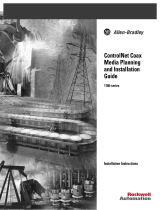 Rockwell Automation Allen-Bradley ControlNet 1786 Series Installation Instructions Manual
Rockwell Automation Allen-Bradley ControlNet 1786 Series Installation Instructions Manual
-
Rockwell Automation 1784-U2CN Installation Instructions Manual
-
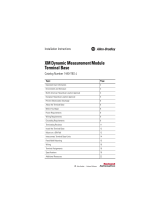 Rockwell Automation Allen-Bradley 1440-TBS-J Installation Instructions Manual
Rockwell Automation Allen-Bradley 1440-TBS-J Installation Instructions Manual
-
Automationdirect.com Productivity 2000 P2-08TD1P User manual
-
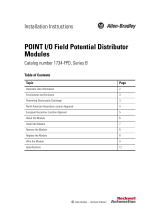 Rockwell Automation Allen-Bradley POINT I/O 1734-FPD Installation Instructions Manual
Rockwell Automation Allen-Bradley POINT I/O 1734-FPD Installation Instructions Manual
-
 Rockwell Automation POINT I/O Installation Instructions Manual
Rockwell Automation POINT I/O Installation Instructions Manual
-
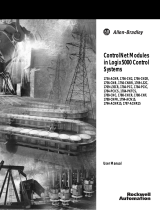 Rockwell Automation Allen-Bradley ControlNet 1756-CNB User manual
Rockwell Automation Allen-Bradley ControlNet 1756-CNB User manual
-
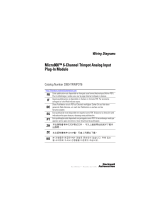 Rockwell Automation Micro800 Wiring Diagrams
Rockwell Automation Micro800 Wiring Diagrams
-
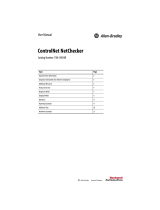 Rockwell Automation Allen-Bradley ControlNet NetChecker User manual
Rockwell Automation Allen-Bradley ControlNet NetChecker User manual














































